How to Prepare a USB Drive for Windows 10 Installation
After downloading the Windows 10 .iso file, you can make a bootable USB drive for installation.
Note: Ensure your USB drive has at least 8 GB of space.
The tools you can use for this process are:
Rufus
- Download Rufus for free here.
- Scroll down and download the latest version of Rufus in the Download section.
- Connect the USB drive and open the Rufus application.
- Click on Select and locate the Windows 10 .iso file you want to use.
- Finally, click on Start.
- When the process is finished (progress bar at 100%), click on Close and your USB drive will be ready for Windows 10 installation.
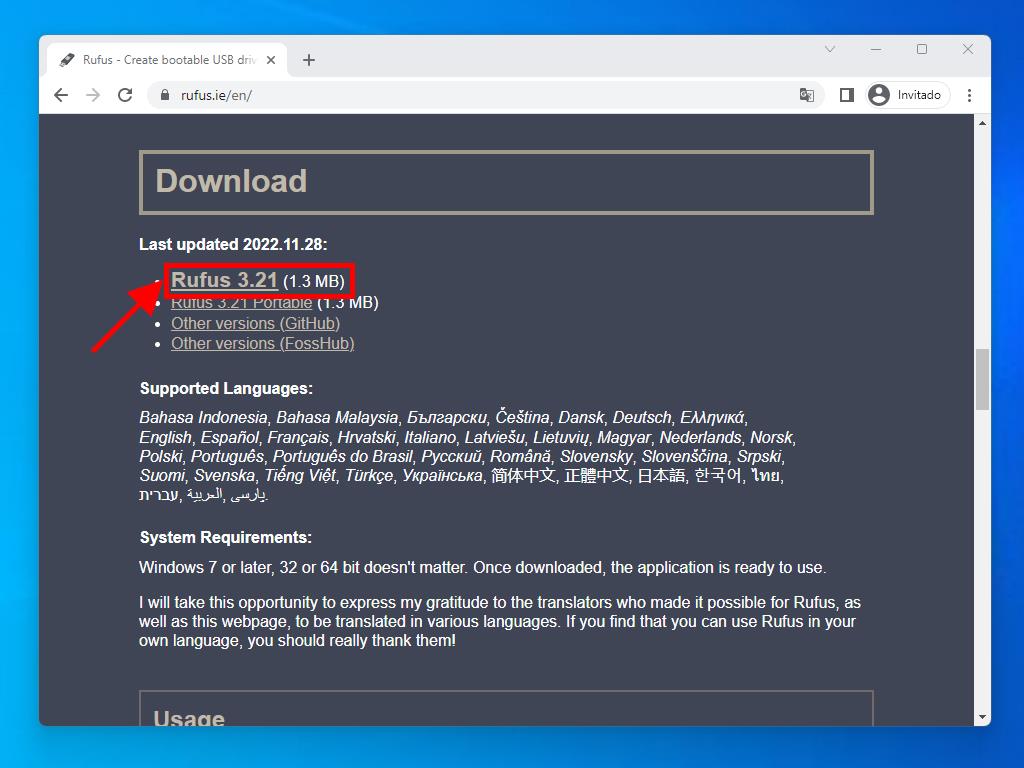
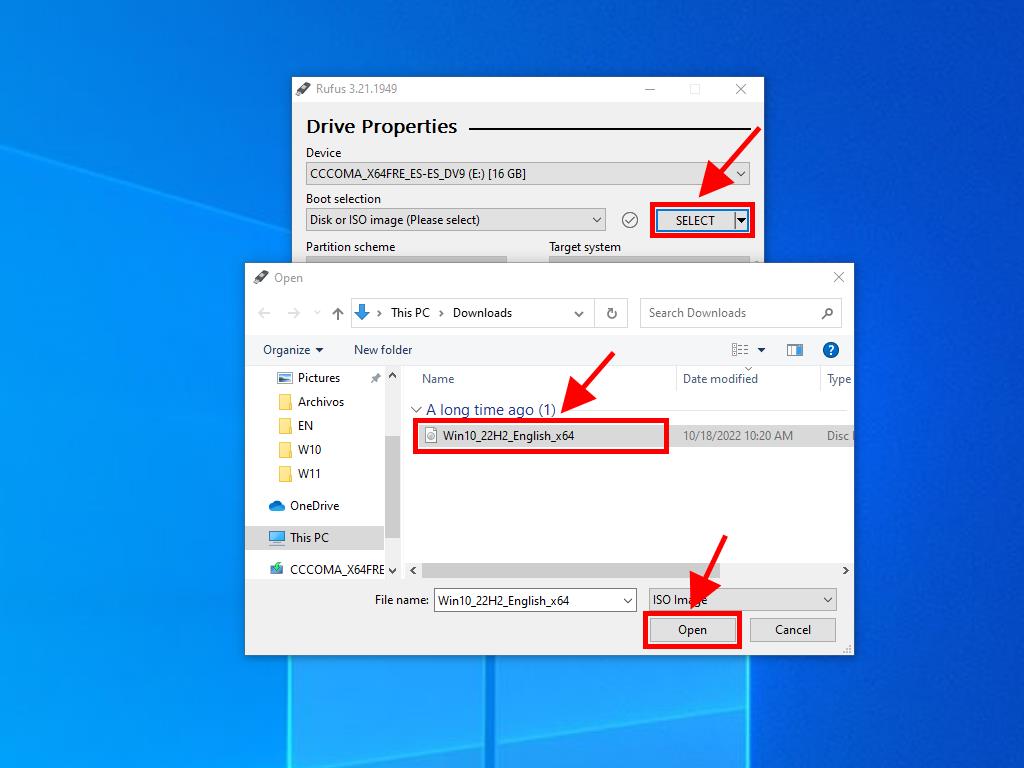
Note: A popup window called Customize Windows Installation will appear; select the Disable Data Collection option and wait for Rufus to create the bootable USB drive.
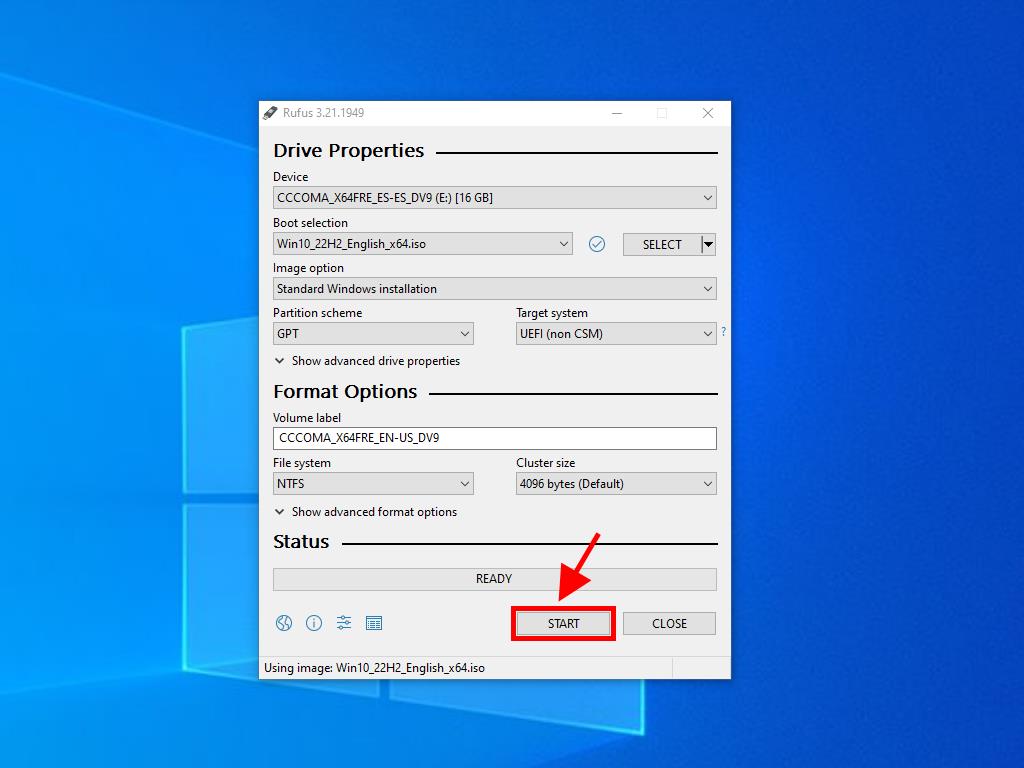
Note: For PCs released after 2020, choose the GPT partition scheme option. For older PCs, select MBR.
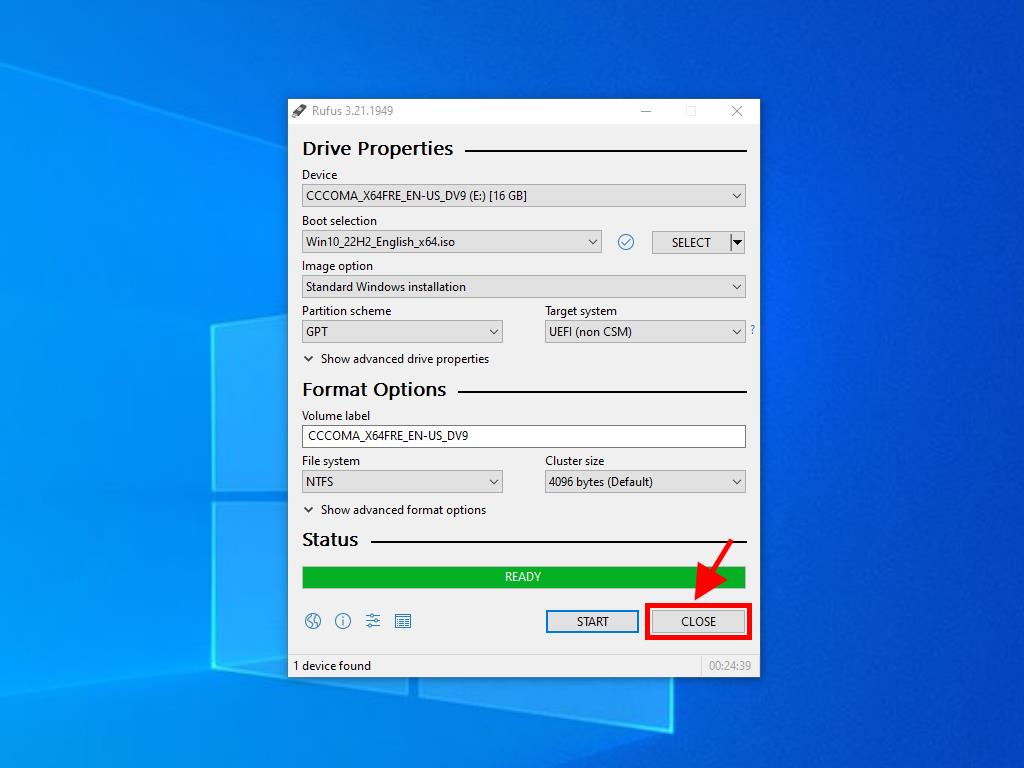
MediaCreationTool
- Download MediaCreationTool for free here.
- Accept the terms and conditions to install it.
- After accepting the terms and conditions, a box will appear where you should select Create installation media and click Next.
- Then, a box will appear where you should select the language, edition, and architecture.
- Click on Next and you'll see 2 options: USB flash drive or .iso file
- Ensure the USB drive is connected and click on Next. This will initiate the download and setup on your USB drive.
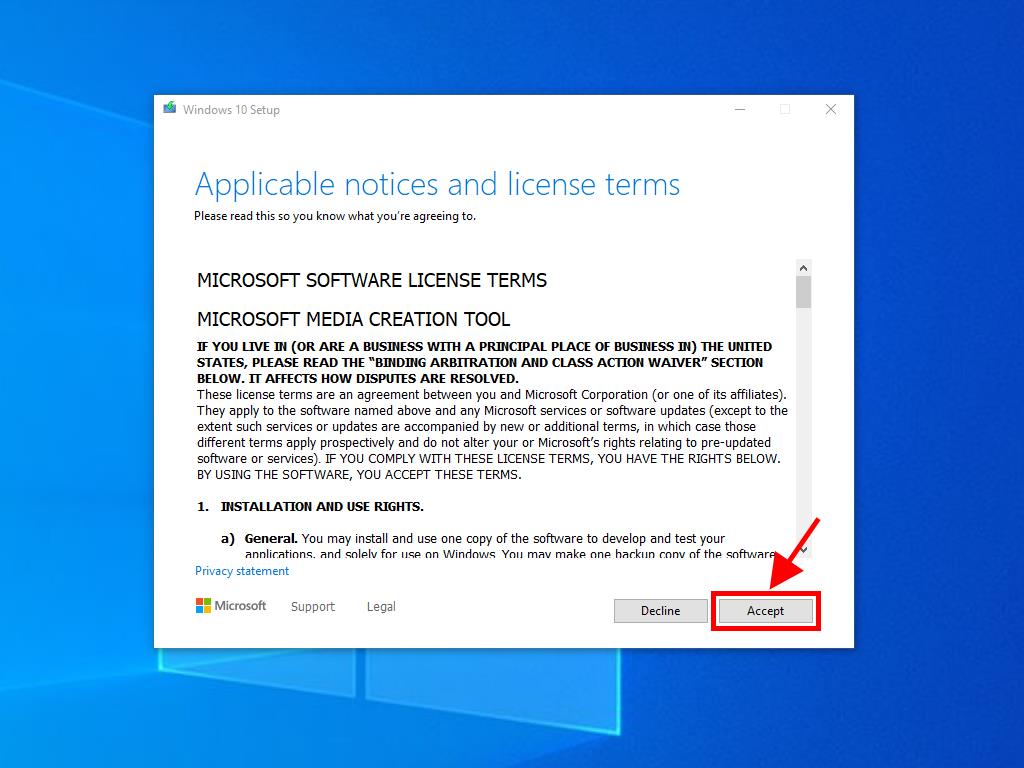

Note: If you don't agree with the language or Windows edition, uncheck the use the recommended options for this Pc box and you'll be able to select the language and edition of your preference.
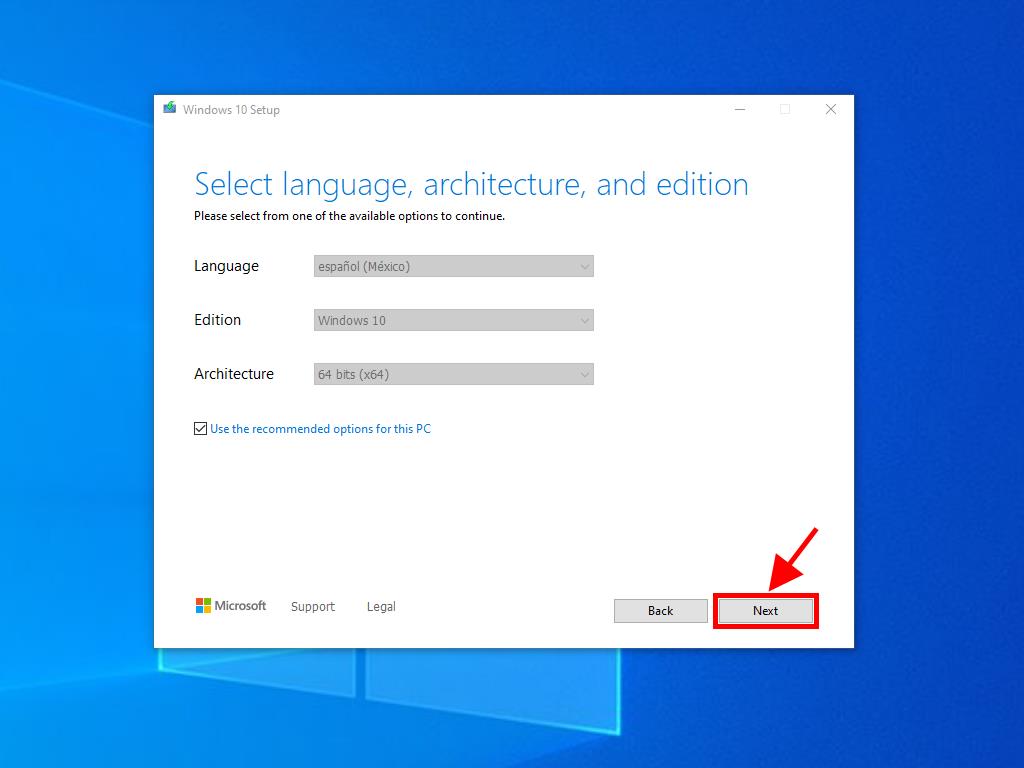
Notes: If you can't find your USB drive, close the application and restart it without disconnecting the USB from your PC. Remember to back up any data on the USB drive, as it will be erased during this process.
 Sign In / Sign Up
Sign In / Sign Up Orders
Orders Product Keys
Product Keys Downloads
Downloads

 Go to notfound
Go to notfound